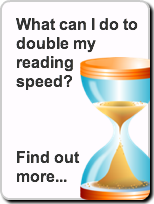Clearly, web presentations and teleconferences are here to stay, so here are some ideas to help you prosper in this new virtual environment.
1. Quick up-front interaction
If you are presenting to a small group (say, maximum 6-8), rather than starting with the typical introduction of yourself, make time to talk ever so briefly with each participant. Ask them what they do and what they hope to get out of the presentation.
2. Personalise relevant points
As you get into the presentation, you can use this personal connection to focus relevant points in the direction of particular participants.
Example: "So Al and Ruth, at the beginning you both said you were here to learn more about the timescales. Let's take a moment to go through those".
It's really easy for individual listeners to zone out or get distracted during a web presentation - this is a simple and really effective way of keeping them engaged.
3. Encourage limited interaction
With real-world presentations, once we get started, we typically expect to complete the presentation uninterrupted and then take questions at the end.
With a web presentation to a small group, consider actively encouraging interaction at appropriate points. You've already established one-to-one communication, so why not throw out personalised, directed questions to keep people engaged.
Example: "Al and Ruth, now we've covered the timescales, can you see those working or do you have concerns?"
If the answer is in the negative, you don't need to answer right there and then. Simply indicate that their concerns are noted and promise to come back to that vital point once you're done.
4. Insert mini-summaries as you go
The old, "Tell them what you're going tell them (overview), tell them (main body) and tell them what you've just told them (summary)" is just as applicable to web presentations - but with a twist. When you are breaking the main body of your presentation into smaller sub-sections, plan to include mini-summaries at the end of each sub-section as well.
5. Give your audience time to process and respond
When we are presenting face-to-face, we pause quite a lot. More than we probably realise. When we can't see the people we are presenting to we have a tendency to just keep talking in order to fill the void. Don't be tempted. Pause frequently. This allows your virtual audience time to process what they've just heard. If you are encouraging your audience to interact more than usual, pauses also allow time for people to respond.








